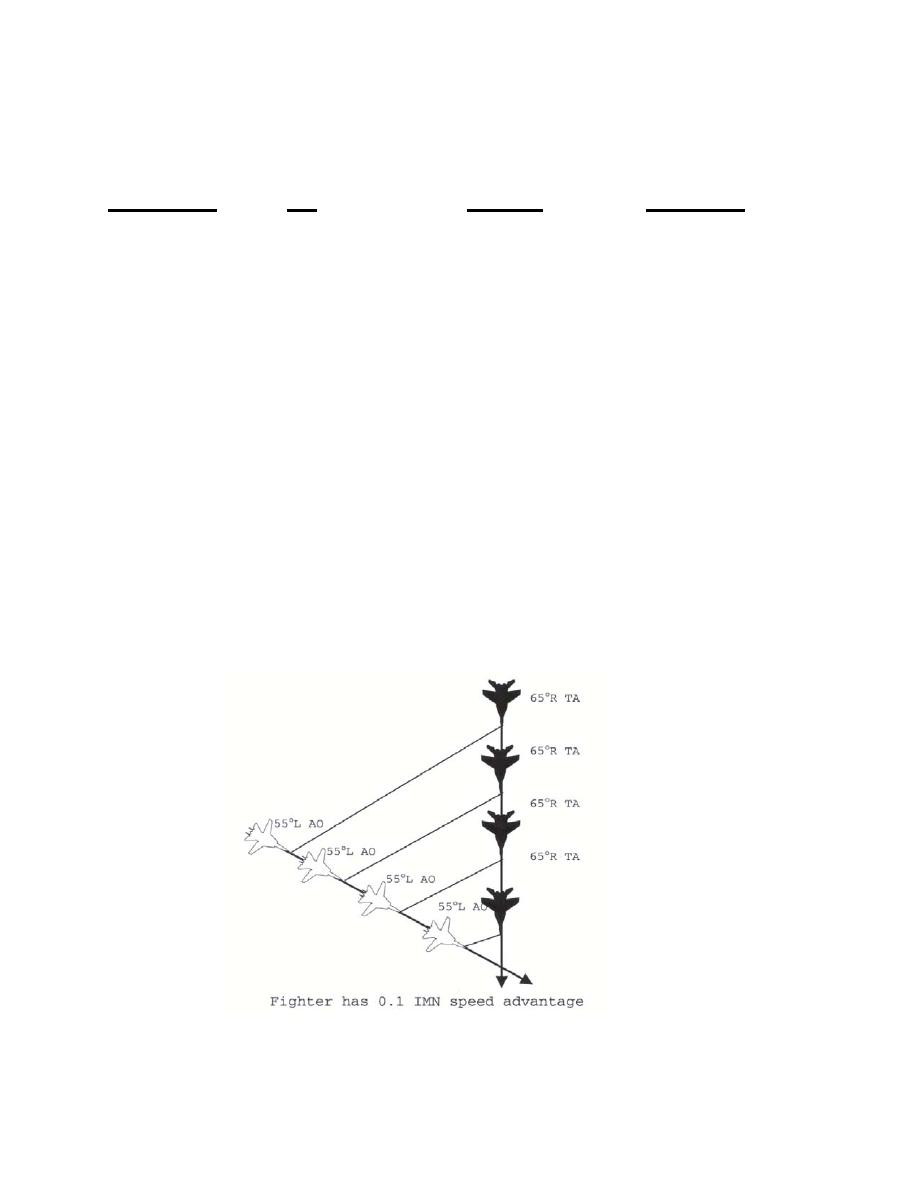 |
|||
|
|
|||
|
|
|||
| ||||||||||
|
|  INTERCEPT PROCEDURES TEXTBOOK
The following chart provides all of the required cuts for each of the "cold 100" set-ups. These
aspects are a compromise between keeping the bogey on the scope and controlling the drift by
having the bogey as close as possible to collision bearing.
Cut
Angle Off
Displaces to:
Target Aspect
50 L/R
100 R/L Cut
50 R/L
0
55 L/R
100 R/L Cut+B
45 R/L
5
R/L
60 L/R
110 R/L Cut+B
50 R/L
10
R/L
65 L/R
120 R/L Cut+B
55 R/L
15
R/L
70 L/R
120 R/L Cut+B
50 R/L
20
R/L
75 L/R
130 R/L Cut+B
55 R/L
25
R/L
Non-Isosceles Intercept Triangle
The command required to accelerate the aircraft is "Buster, set speed 0.6." The pilot will
accelerate and hold 0.6 IMN until directed to change speed.
Since this speed advantage allows the fighter to reach the point of flight path intersection at
the same time as the bogey, the fighter and bogey are on collision. However, an isosceles
triangle no longer exists. The following characteristics of a collision course remain true:
1. TA will remain constant with decreasing range
2. Bogey bearing and angle off will remain constant with decreasing range
3. If the fighter's airspeed is held at 0.6 IMN and the bogey's airspeed is held at 0.5 IMN,
the two aircraft will collide if slant range is allowed to decrease to zero (co-altitude).
Figure 4
110
|
|
Privacy Statement - Press Release - Copyright Information. - Contact Us |